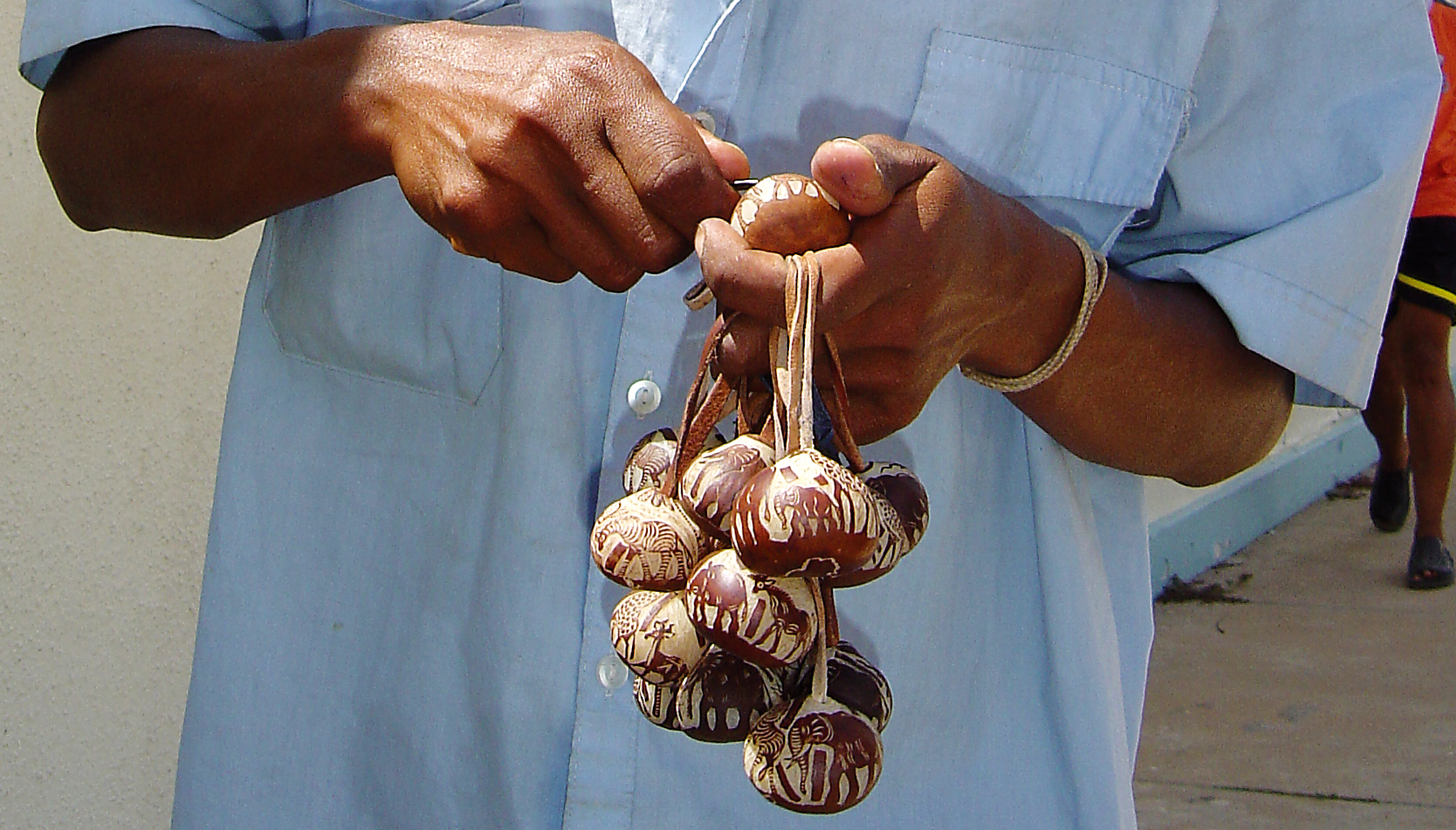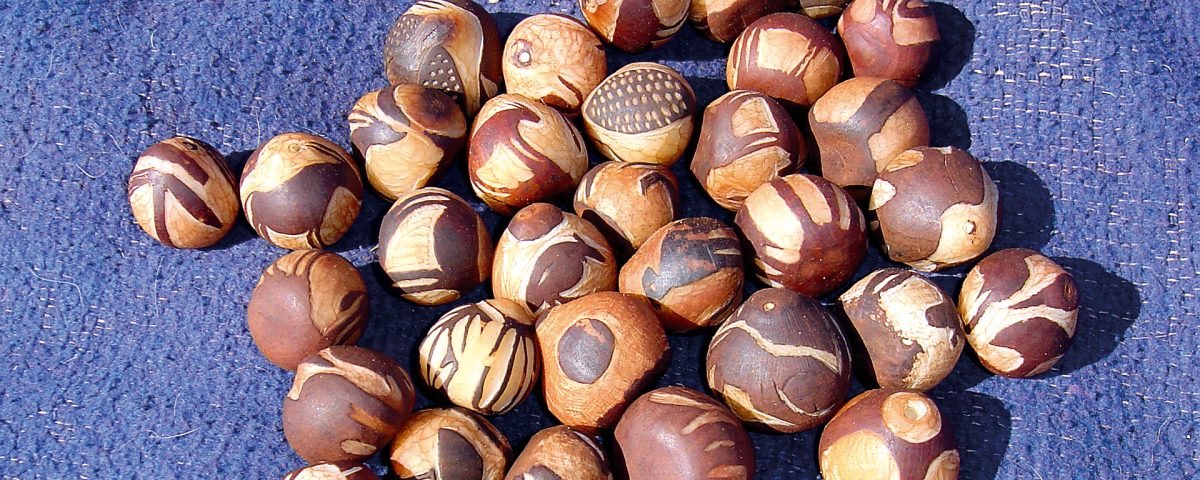
Of wind, air and climate change
August 1, 2016
A quantity and quality birding area par excellence
August 3, 2016[vc_row][vc_column][vc_column_text]Text and Photos by Ginger Mauney[/vc_column_text][/vc_column][/vc_row][vc_row][vc_column][vc_column_text]
Tall, elegant trees with long, fan-shaped leaves armed with sharp, black thorns – this is the makalani palm, Hyphaene petersiana, found throughout northern Namibia.
[/vc_column_text][/vc_column][/vc_row][vc_row][vc_column width=”1/2″ css=”.vc_custom_1470131768481{padding-top: 30px !important;}”]


T he height and shape of these palms make them conspicuous in a landscape of low-lying shrubs and acacia trees. With male and female flowers borne on separate trees, makalani palms produce a very hard nut – the dark-brown skin covering an ivory-coloured kernel – referred to as ‘vegetable ivory’. Carvers transform these nuts into pieces of art that are incorporated into jewellery and used to adorn linen and functional items such as key rings, giving them an intrinsically Namibian flavour.
Given the small surface area they have to work on, carvers craft their subject matter with amazing detail. A story is often told, and sometimes the place of origin of the palm tree is etched into the ivory, initiating a journey in the mind of the viewer.
Makalani palms are found on the banks of the impressive Kunene River, the perennial watercourse that forms the border between Namibia and Angola. They grow singly or in small groups, rising above the salvadora bushes that line the riverbank. Sharing this extreme desert landscape are the nomadic Himba, a group of stately pastoralists with a rich, intriguing history of attachment to the harsh land and their huts of sticks covered with cattle dung.
As tourists approach a Himba village, a woman spreads a blanket on the ground in front of one of the huts to make a makeshift curio shop. On offer are metal bracelets, leather necklaces, traditional wooden headrests and a cluster of carved makalani palm nuts. The etchings on these nuts are naïve carvings of what the Himba see on a day-to-day basis – the toktokkie beetles that scurry across the hot sand, the goats the herdsmen flock to find grazing, and a lone gemsbok perched on a distant ridge. There is no embellishment, no hint of what might have been – just a simple rendition of what was seen and captured in a single moment. In fact, these simply carved nuts are the perfect souvenirs to remind visitors of a momentary exchange between cultures.
On the way to the Etosha National Park, a microbus carrying tourists pulls up outside a café in Outjo, a small town just 120 kilometres from the main entrance of the park. As the tourists climb out, they are approached by a man holding a string of carved makalani palm nuts. The carvings on the vegetable ivory are detailed, revealing the scene as the nut is turned around – an elephant with its enormous ears spread, a giraffe with long, graceful legs outstretched, and between them a tiny, dotted line of guinea fowl spanning the bottom of the nut. For tourists on their way to Etosha, it is a scene that creates expectations, and Thomas, the carver who has brought his wares all the way from Damaraland to Outjo, is aware of this.
Before the tourists have made their way into the café, Thomas has memorised their names. While they sit inside enjoying coffee and cake, he sits under a tree, carving their names onto individual nuts, personalising each scene and turning a key-ring into a treasure.
As one would expect from a cosmopolitan capital, in Windhoek the uses for carved makalani palm nuts increases all the time. For the past five years, Susanne Asmus has been buying them from the same carver for her business, Artistic Presents, at the Namibia Craft Centre. Her stall showcases greeting-cards, key-rings, stationery, recycled glassware and dyed and painted clothing, all hand made in Namibia. She also turns them into buttons for clothing, and combines them with other natural stones and pods to create tablecloth weights. “I must have a thousand good nuts stored in my house,” laughs Susanne, who then quickly admits to buying more almost every day.
At other fine shops in Windhoek, you find makalani palm nuts used in unexpected ways. Anin, a local producer of fine linens, uses them to adorn pillows and duvet covers, while many of the country’s fine jewellers use makalani nuts in their creations. Some nuts are cut in half and used as the centrepiece for necklaces, while others are kept whole and dangle from long chains or sturdy key-rings.
So whether you choose to wear a makalani palm nut around your neck, hang your keys from or hold down your tablecloth, it will tell the story of its origin and provide a natural reminder of your journey through Namibia.
[/vc_column_text][/vc_column][/vc_row][vc_row][vc_column]

This article was first published in the Flamingo March 2007 issue.
[/vc_column_text][/vc_column][/vc_row]


